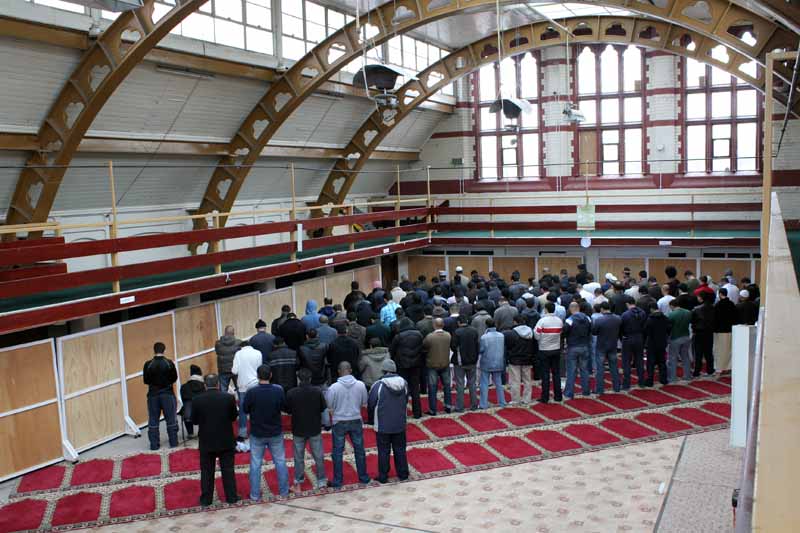Alan Clawley reveals a bit of history about one of Birmingham’s landmark buildings.
The famous firm of architects Martin and Chamberlain designed so many terra cotta public buildings in Birmingham in the nineteenth century that the work of another architect, Henry Martin, was assumed by eminent authorities Pevsner and Bryan Little to be the work of William Martin (1829-1900).
But Henry Martin ran his own practice from an office in the city centre from 1892 to 1901. He may have been born around 1850 and probably died after 1914. His only major work was the Public Library and Baths at Green Lane, Small Heath, opened in two phases in 1893 and 1902.
Today the buildings house the Green Lane Mosque and are owned by the Markazi Jamiat Ahl-e-Hadith. In 1977 they were vacated by the City Council and left to the mercy of the elements and the scrap metal merchants as soon as the new brutalist Small Heath School and Community Centre in Muntz street had been opened by Harold Wilson.
I got to know the empty buildings very well when I single-handedly measured them up for a set of scale drawings that I entered in a competition organised by The Architects Journal, the Victorian Society and a big tracing paper manufacturer. My entry was commended and the Duke of Gloucester presented me with my prize, £20 and a bottle of champagne, at the Royal Institute of British Architects in London.
With the help of Joe Holyoak and the Victorian Society the buildings were Listed Grade 2. The report I wrote to support the application noted that, when I started to measure up the inside of the empty buildings in 1977, I discovered that they were easily accessible from Little Green Lane. Windows were already extensively smashed, rainwater was entering many parts of the buildings and the boiler equipment appeared to have been illicitly dismantled. Pipework and cast iron bathtubs had also been stripped or moved from their original positions.
The library appeared at this time to be less extensively damaged although it was obvious that it was possible to get in at the Little Green Lane side through a broken upper window. Rainwater had already caused some of the moulded ceiling plasterwork to fall down and the wood block floor was beginning to warp. The clock faces and most of the leaded stained glass windows were still intact at this stage.
The windows were belatedly boarded up by the Council in 1979 by which time the buildings were in a terrible state. Amazingly the Council then sold the entire complex to their present owners for £25,000 who have gradually brought the entire complex back into use with their own money and small amounts of public funding to restore the Clock Tower and provide living accommodation for teachers. The government’s Community Programme helped them convert the First Class Baths in the 1980s.
The Library became the administrative centre, the Second Class Baths was filled in and converted to a community hall. The Slipper Baths were taken out and the space integrated in the mosque complex. Recently the Boiler House was converted to student flats and its windows replaced by custom-built double glazed units that matched the originals. The Chimney is listed separately as a reminder of the boiler’s coal-fired past.
The owners of the buildings also deserve the credit for rescuing it from dereliction and painstakingly giving it a new lease of life, one that could never have been envisaged by its Victorian architect Henry Martin.
